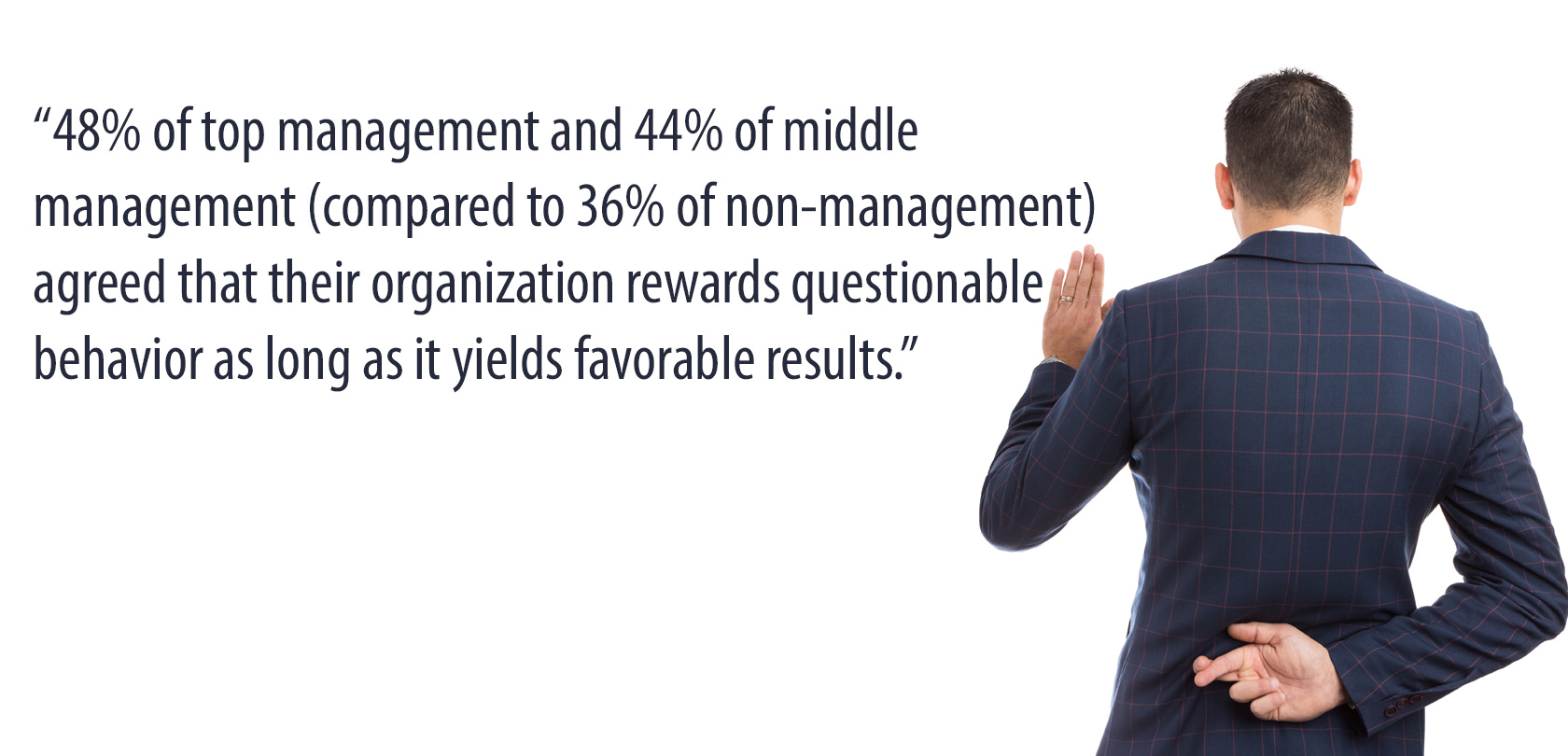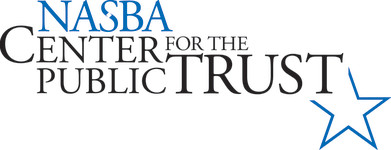Trickle Down Ethi-nomics: Do Bottom Level Workers Share the Views of The Top?

A review of studies and stats about the state of workplace ethics points to an alarming trend that has emerged. It seems that leadership has a rosier view of the state of ethics in their workplace than non-managerial employees. This rosy view of workplace ethics not only pertains to how those in management see their workplace, but also how they see themselves, which could have a compounding negative effect on workplace culture.
According to stats by the Ethics and Compliance Institute (ECI), 72% of top management and 54% of middle management perceive an ethically strong culture at work compared to only 43% of non-management. Even more shocking, the same study revealed that 48% of top management and 44% of middle management (compared to 36% of non-management) agreed that their organization rewards questionable behavior as long as it yields favorable results. These two data points seem contradictory- how can top management both agree that their organization rewards questionable behavior AND that their organization has an ethically strong workplace culture? Odder still, it seems that top management might even be more aware of ethical grievances committed at work as 48% of top management compared to 36% of non-management agree that results are king, no matter how they are achieved.
These are the only statistic differences between leadership and non-leadership employees. On average, business leaders are both faced with more ethical dilemmas. Leaders also report being familiar with their organization’s code of ethics (96%) and feel that the ethics training they receive at work is effective (94%). Younger generations, however, don’t agree with only 28% of Gen Z finding their ethics training to be effective. Business leaders tend to rate themselves as more ethical, more prepared and better trained- but how can this be true when they are coerced to bend the rules and experience more ethical dilemmas than others? Those dilemmas and coercions come from somewhere- likely from others at the top. Additionally, only half of leaders discuss ethics on a regular basis and 55% of employees report only hearing about ethics when something goes wrong.
Are these stats about business leaders a circular path of destruction? It’s possible that business leaders see themselves are more ethical than they are, which leads them to feel that they are doing a better job or creating an ethical culture than they are, which leads them to disregard evidence of an ethically weak culture. While leaders ignore the facts, non-management employees feel the culture fully and this disconnect between what leadership believes and what is results in distrust. Young workers are less likely than other generations to turn to leadership when ethical dilemmas occur and the worrying stats above might explain why.
In order to prevent this vicious cycle business leaders need to be challenged to analyze why they believe their workplace has an ethical culture. What protocols are in place? What protection is there for those reporting misdeeds? Are they rewarding the wrong methods? Are they promoting people who agree with them or who are honest and vocal about what they see? Are they addressing ethics regularly or only when the organization is in crisis?
If business leaders can’t answer these questions confidently, it might be time to come to terms with a workplace culture that is significantly less ethical than it appears.
– Alyssa Gallas, Operations Manager




